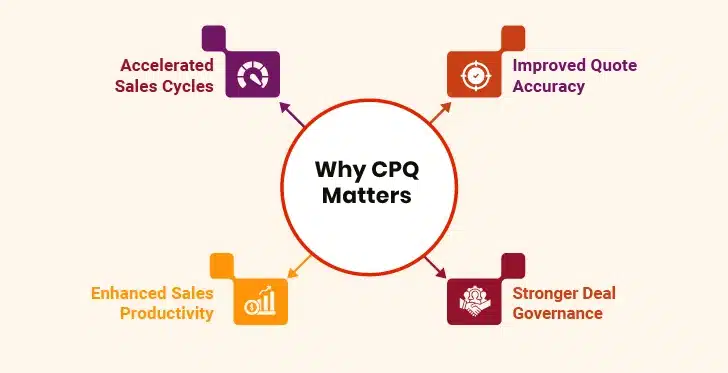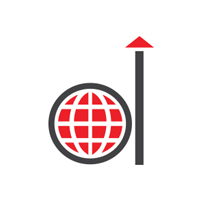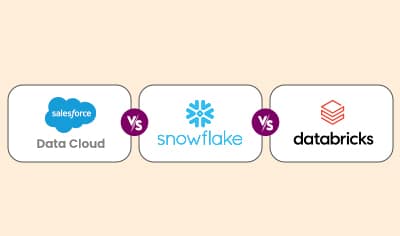Revenue management is one of the most talked about challenges, especially in medium-large enterprises. Closing sales deals is only the beginning of the revenue journey. The main question is…what happens after you sign a deal? How will you make sure that your contract is executed smoothly, or billing is accurate? What about your revenue streams…do you see a forecast for the next six months?
Even today, many businesses find it difficult to connect the dots between their sales and finance processes. They end up dealing with heavy revenue leakage, inaccurate forecasting, and incorrect pricing models. As sales teams prioritize closing deals, finance folks need consistency in contract management, billing, and compliance. If they are not on the same page, it’s going to be tough to strive in the long run.

Here’s the good news. Salesforce’s two product offerings—CPQ (Configure, Price, Quote) and RLM (Revenue Lifecycle Management)—are the solutions for enterprises trying to find a balance between their sales and finance processes. Salesforce CPQ simplifies product pricing, configuration, and quote generation. RLM, on the other hand, manages the entire revenue lifecycle—from initial sales to contract management, billing, and renewals.
But which one is right for your business? Or do you need both? This blog will help you with a clear understanding of CPQ and RLM, and their differences. If you’re a C-suite executive, by the end of this article, you will be able to make an informed decision about which solution aligns best with your revenue strategy.
Table of Contents
Understanding Salesforce CPQ: Optimizing the Sales Process
Salesforce RLM: Going Beyond CPQ
How CPQ and RLM Are Different?
How CPQ and RLM Work Together?
Understanding Salesforce CPQ: Optimizing the Sales Process
With the help of Salesforce CPQ, your sales team can create accurate quotes, apply the right pricing, and close deals faster. The tool is designed to get rid of manual errors, accelerate deal closures, and ensures that pricing and discounting are consistent across all units.
Creating proposals is always a tedious task. Till a few years back, sales representatives were expected to create a detailed proposal from scratch. No matter how skilled, they would struggle with complex pricing rules. Plus, let’s face it, building a quotation is a time-consuming process.
CPQ simplifies the process by using automation, standardization, and predefined business rules in the quoting process. This allows sales teams to generate an accurate and personalized client proposal in much lesser time. This means reduced chances of losing deals due to slow response times or pricing discrepancies.
What CPQ Does
Salesforce CPQ comes with a set of features that improves sales efficiency and accuracy. Let’s look at some of them:
1. Product Configuration
CPQ ensures that sales representatives select the correct product combinations and configurations. Additionally, it prevents the selection of incompatible products and applies upsell and cross-sell recommendations to maximize deal value.
2. Pricing and Discounting Automation
The quote-to-cash tool lets you set these elements:
- Complex pricing rules
- Volume discounts
- Tiered pricing
- Customer-specific pricing
This mitigates inconsistency in pricing and discount standards.
3. Quote Generation
The system automatically generates error-free, standardized quotes with the correct product and pricing details. You can personalize these quotes with branding elements and applicable specific terms and conditions.
4. Deal Management
CPQ tracks negotiations, applies approval workflows, and ensures compliance with company policies. Furthermore, your sales managers can set up multi-level approval processes to maintain pricing discipline.
Why CPQ Matters
By leveraging the features we talked in the above section, Salesforce CPQ reduces manual effort and improves accuracy in the sales cycle. Here are the benefits that tag along with a strong CPQ platform like that of Salesforce.

I. Accelerated Sales Cycles
No more back-and-forth on pricing approvals. By automating product selection, pricing, and approval workflows, CPQ minimizes the time needed to create and finalize quotes. This boosts your sales teams to close deals much faster.
II. Improved Quote Accuracy
Errors in pricing or product selection can kill deals. But with Salesforce CPQ, you can minimize errors in pricing and configurations. It helps you reduce the chances of disputes and rework. This leads to higher customer satisfaction and fewer deal delays.
III. Enhanced Sales Productivity
Sales reps should spend less time on admin tasks and more time with clients. Salesforce CPQ makes this happen. Your sales team can generate personalized quotes as well as set up automated approvals through CPQ. This completely eliminates the need for back-and-forth for approvals and saves a lot of time…important time, which can be used in building stronger client relationships!
IV. Stronger Deal Governance
Your team can set discounting and pricing standards and approval hierarchies. This will make sure that pricing strategies are consistent and are in line with your profitability goals.
Learn How a Logistics Technology Provider Achieved 40% Growth with Customized Salesforce CPQ Solution
When seen as a standalone tool, CPQ might be enough. But closing a deal is just one part of revenue management. Often, the real challenge begins after the sale. This is where Revenue Lifecycle Management (RLM) comes into the picture.
Salesforce RLM: Going Beyond CPQ
So, what happens after a sale is closed? This is what Salesforce RLM is all about. It is a more strategic approach to managing revenue by going beyond the sales cycle. Unlike CPQ, RLM manages the entire revenue lifecycle.
- Contract lifecycle
- Billing
- Revenue recognition
- Renewals
RLM lets you manage everything from one single platform.
Many businesses, especially those with subscription-based models, struggle to manage recurring revenue. They need a system that automates:
- Contract renewals
- Billing adjustments
- Compliance with financial regulations.
RLM is the answer to all these functionalities. Its comprehensive approach ensures predictable revenue streams and accurate financial reporting.
What RLM Does
Simply put together, Salesforce RLM provides end-to-end revenue management capabilities. It facilitates seamless financial operations for enterprises. Below are some of its features that make it an effective revenue management tool.
1. Contract Lifecycle Management
Every business deal involves contracts. However, managing them manually is so old-school. RLM steps in to automate:
- Contract creation
- Pricing approvals
- Contract renewals
It makes sure that you never miss a renewal opportunity (or lose revenue due) to expired contracts.
For example, if a customer upgrades or downgrades their subscription, RLM automatically adjusts the contract terms and billing. No more chasing customers for paperwork—everything is streamlined and automated.
2. Automated Billing & Subscription Management
Billing mistakes are one of the most common sources of revenue leakage. RLM ensures customers are billed correctly every time. It supports subscription-based, usage-based, and hybrid billing models. Whether a customer pays a fixed fee, uses a pay-as-you-go model, or a mix of both, RLM automates the calculations. You can generate invoices in real time which reduces delays and improves cash flow.
3. Revenue Recognition & Compliance
Recognizing revenue correctly is very important for reporting. You don’t want to deal with compliance risks and inaccurate statements. RLM makes sure that businesses follow ASC 606 and IFRS 15 accounting standards. It helps in ensuring transparency and compliance. This means finance teams can finally get rid of those heavy spreadsheets.
4. Revenue Forecasting & Analytics
If you’re a CTO or a CIO, you’ll agree that you need visibility of the next six months (at least) for making the right finance decisions. Salesforce RLM gives you the insights that you need to make those important decisions.
- Revenue trends
- Renewal rates
- Financial health, and more.
Businesses can now predict future revenue with confidence. This helps them plan growth strategies effectively.
Why RLM Matters
RLM helps businesses gain better control over their revenue processes which ensures financial stability and growth.
I. Revenue Predictability
Inconsistent billing, missed renewals, and unexpected customer churn are the cause of a fluctuating revenue. Salesforce RLM improves revenue stability by automating renewals, structuring billing cycles, and providing real-time visibility into future revenue streams. RLM also enables you to predict cash flow, letting go of all the uncertainties and staying prepared.
II. Better Customer Retention
Many businesses avoid investing in retaining their customers. But it is as important as acquiring a new one. Most of these businesses lose customers simply because renewal processes are manual. RLM automates contract reminders, approvals, and adjustments. So, customers stay engaged throughout the process. Also, upgrades and expansions become seamless over time. This enables businesses to upsell additional services with minimal effort. RLM, therefore, can improve customer experiences and increase retention rates.
III. Seamless Finance Operations
Revenue management involves multiple departments—sales, finance, operations, and customer success—all of which need to work in sync to maintain efficiency. RLM acts as a central revenue system. It bridges the gap between these teams and ensures data consistency across contracts, billing, and financial reporting. Finance teams no longer need to manually reconcile revenue data. RLM provides an automated, transparent, and error-free financial workflow.
IV. Regulatory Compliance
It’s important for businesses to ensure compliance with revenue recognition standards like ASC 606 and IFRS 15. Tracking revenue manually might lead to errors, audit risks, and even penalties. With Salesforce RLM in the picture, this is easier. It automates revenue recognition. The tool ensures that industry standards are being followed.
Additionally, it generates audit-ready reports. This makes compliance effortless and reducing the risk of incorrect financial statements. By maintaining transparency and accuracy, RLM helps businesses avoid legal complications and build investor and stakeholder confidence.
Now, let’s look at the differences between these two Salesforce product offerings.
How CPQ and RLM Are Different?
While CPQ and RLM both help manage revenue, they serve different purposes.
| Feature | Salesforce CPQ | Salesforce RLM |
|---|---|---|
| What It Does | Helps sales teams create accurate quotes and close deals faster | Manages revenue after the sale, including contracts, billing, and revenue recognition |
| Who Uses It | Sales & Revenue Operations teams | Finance, Sales, and Customer Success teams |
| Key Focus | Quote-to-Cash (Sales Process) | Lead-to-Revenue (Entire Revenue Lifecycle) |
| Biggest Benefit | Accelerates sales cycles and reduces pricing errors | Ensures long-term revenue growth and compliance |
They address different but equally important stages of the revenue process.
How CPQ and RLM Work Together?
While CPQ and RLM serve different functions, they are most powerful when used together. CPQ helps you close deals faster with accurate quotes and RLM ensures revenue flows smoothly throughout the customer lifecycle. When integrated, these solutions create a seamless revenue management process from lead to revenue recognition.
To understand how CPQ and RLM complement each other, let’s break down a typical revenue journey:
1. Sales & Quoting (CPQ’s Role)
a. A sales rep receives a request from a customer and uses Salesforce CPQ to configure the right product/service combination.
b. CPQ ensures the right pricing, discounting, and approval rules are applied, preventing revenue leakage due to incorrect pricing.
c. The system generates a professional, error-free quote, ensuring speed and accuracy in the sales process.
2. Contract & Order Management (CPQ + RLM)
a. Once the deal is finalized, CPQ seamlessly passes the data to RLM to ensure accurate contract creation.
b. RLM automates contract lifecycle management, ensuring all terms (renewals, upgrades, downgrades, or cancellations) are tracked properly.
c. If a customer requests modifications later, RLM ensures all changes are automatically reflected in billing and financial records.
3. Billing & Revenue Recognition (RLM’s Role)
a. After the sale, RLM automates billing based on contract terms (one-time fee, recurring subscription, or usage-based pricing).
b. It ensures invoices are generated on time, reducing delays and improving cash flow.
c. RLM also automates revenue recognition in compliance with standards like ASC 606 and IFRS 15, reducing financial reporting risks.
4. Renewals, Expansion & Customer Retention (RLM’s Role)
a. RLM tracks contract end dates and automatically triggers renewal processes, ensuring customers continue their subscriptions without disruption.
b. If a customer wants to upgrade or expand their purchase, RLM streamlines the process, making it easier for sales and finance teams to track revenue changes.
c. This automation reduces churn, improves customer satisfaction, and ensures predictable revenue growth.
Key Benefits of CPQ + RLM Integration
- Single Source of Truth
- Faster Sales Cycles
- Reduced Revenue Leakage
- Better Forecasting
CPQ and RLM work within Salesforce, ensuring sales, finance, and customer success teams work from a unified system.
CPQ eliminates pricing errors and speeds up approvals, while RLM ensures seamless contract and billing execution.
Automated contract and billing workflows eliminate manual errors, ensuring no revenue is lost due to mismanagement.
RLM provides real-time insights into recurring revenue, renewal rates, and financial health, helping leadership teams make informed decisions.
Deciding Which Solution (or Both) to Implement
Not every business needs both CPQ and RLM. Some companies may only require CPQ to optimize sales processes, while others may need RLM to manage complex revenue structures. However, many businesses benefit from an integrated approach. The right choice depends on your business model, industry, and revenue management needs.
When CPQ Is the Right Choice
CPQ is ideal for businesses that:
a. Have transactional sales models (one-time purchases rather than subscriptions)
b. Struggle with slow or inaccurate quoting processes, leading to lost deals or margin erosion
c. Need automated pricing and discounting approvals to maintain profitability
d. Want to reduce deal turnaround times and speed up the sales cycle
e. Already have a strong finance and billing system but need to optimize sales quoting
Industries that Benefit
- Manufacturing: Configuring complex product bundles
- Technology & IT Services: Custom pricing for software and hardware solutions
- Retail & Distribution: Managing volume-based pricing and discounts
8 Steps to Shorten the Sales Cycle
When RLM Is Essential
RLM is necessary for businesses that:
a. Operate on a subscription or recurring revenue model
b. Struggle with revenue leakage due to inaccurate billing or manual contract tracking
c. Need to comply with financial regulations like ASC 606 and IFRS 15
d. Want to forecast revenue accurately and track recurring revenue growth
e. Need seamless contract management for renewals, upsells, and changes
Industries that Benefit
- SaaS & Technology: Managing monthly and annual software subscriptions.
- Financial Services: Handling complex contracts and payment structures.
- Healthcare & Life Sciences: Ensuring compliance with financial and legal billing regulations.
When You Need Both CPQ & RLM
Many businesses find that using both CPQ and RLM creates the best results. An integrated CPQ plus RLM solution is best if your company:
- Has both transactional and subscription-based sales
- Requires seamless coordination between sales, finance, and customer success
- Wants to optimize revenue from lead to renewal
- Is scaling and needs predictable revenue growth
- Wants to automate financial compliance, forecasting, and contract execution
Making the Right Decision
If you’re still unsure, ask yourself:
- Do we struggle with slow, inaccurate quoting and pricing issues?
- Are we losing revenue due to poor contract, billing, and renewal management?
- Do we need a fully automated revenue cycle from sales to renewals?
If yes, you need Salesforce CPQ.
If yes, you need Salesforce RLM.
If yes, you need both CPQ & RLM.
Businesses that implement a combined CPQ and RLM strategy are able to minimize revenue leakage and improve operational efficiency.
That’s a Wrap
The stakes are high, it’s not just about closing deals anymore. It’s about building a strong core for a sustained financial growth. And one way to achieve it would be through accurate pricing, automated billing, and predictive revenue data. Salesforce CPQ and RLM both provide the platform that you need to optimize your entire revenue lifecycle.
If you’re looking to streamline your sales and revenue operations, start with CPQ implementation first. Then, you can go one step ahead and integrate your Salesforce RLM with CPQ. A holistic approach ensures seamless transitions from quoting to billing and beyond, eliminating revenue leakage and improving operational efficiency. Start small, start smart with revenue lifecycle optimization. Make every dollar count with a seamless RLM and CPQ integration.





